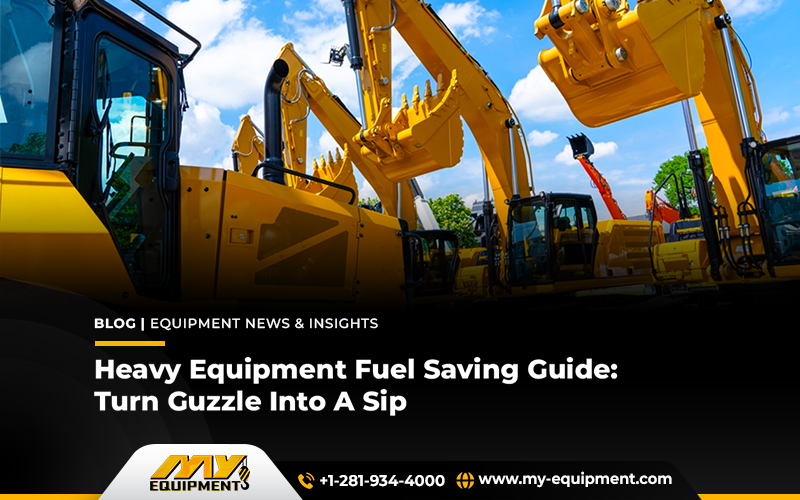Currently, we have seen a hike in diesel prices that has caused turbulence in the heavy equipment market.
The prices have increased by 74% over the past two years. This hike has ultimately increased a total of 40% in the tidal heavy equipment operating cost.
But the good part is if you are smart enough to cope with this diesel price fluctuation, as a heavy equipment supplier you can still stand solid in the volatile market. However, it begins with taking a dig at the fuel prices.
Small changes lead to big differences. Similar is the approach to managing diesel operating prices. All you need is to invest in approaches to make the most out of diesel-powered heavy equipment to see a visible difference in the fuel bill.
Mentioned below are the major fuel-saving tips that heavy equipment suppliers must integrate in 2024;
Speed
The faster you go the greater the fuel will be consumed by the heavy equipment. Fuel consumption increases as per every mile driven by 55mph. The increase in the speed decreases fuel economy by 0.1 mpg.
Cruise Control
The integration of smart cruise systems enables the optimization of heavy equipment’s engine and travel speed. Contractors can further optimize equipment’s efficiency as per different loads.
Gear Usage
Drivers should use heavy equipment in the highest possible available gear. This practice will help in the reduction of the engine’s RPM which will automatically reduce the fuel consumption rate.
Idling
Iding holds the potency of burning ¾-gallon diesel per hour for different heavy equipment. It also actively contributes to wearing and tearing down the equipment’s engine.
Route
The longer the route the higher will be fuel consumption.
Therefore, as a smart fleet manager, you must advise drivers to plan the shortest route possible.
A fuel-efficient route will help in bypassing construction setbacks.
Pro tip:
Drive at off-peak ties to avoid unnecessary on-road congestion.
Tire Pressure
If a tire is around 10 psi it is under-inflated. Eavy trucks are known to lose 1% of their fuel economy due to underinflated tires. It can also lead to tread wear as well as uncertain tire failure.
Care
Pay extra attention to the user guide provided by heavy equipment manufacturers. Schedule all the inspections and maintenance routines accordingly.
Pro tip:
Regular filter and oil changes will increase the efficacy rate by 50%.
Turn off accessories. If you don’t need them, shut them down.
Job-Appropriate Heavy Equipment
Hiring inappropriate machinery for different operations can reduce the machine’s efficacy, decrease the overall process’s productivity, and adversely impact your image as a contractor.
In addition, try investing and upgrading your heavy machinery fleet with automated equipment.
Expert’s advice:
Turn off all the accessories not part of the ongoing construction operation.
Biodiesel Fuel
Construction industries are strictly following environment-friendly policies to attain sustainability and longevity.
Nowadays, heavy equipments are equipped with high-quality biodiesel fuel which means, contractors can turn machinery into low-carbon producing machinery.
In that way, contractors can contribute positively to reducing construction carbon footprint and minimizing greenhouse gas emissions.
Summary
By the end of this fuel-saving guide, we believe that now you know all the parameters that need extra attention. Since global fuel prices are getting higher, all the contractors need to refurbish their existing used heavy machinery to avoid additional fuel consumption.
As a smart fleet manager, you should invest in long-term approaches that can mitigate the fuel consumption ratio.
Moreover, you can also install feet management software to get real-time updates regarding the machinery’s condition. In the same place, you can also keep track of the maintenance history of the machinery which will ease the reselling process.
To get more insights about used heavy equipment maintenance follow MY-Equipment.com and stay tuned for the latest market updates!


 1400 Broadfield Blvd, Houston, TX 77084,
USA.
1400 Broadfield Blvd, Houston, TX 77084,
USA.